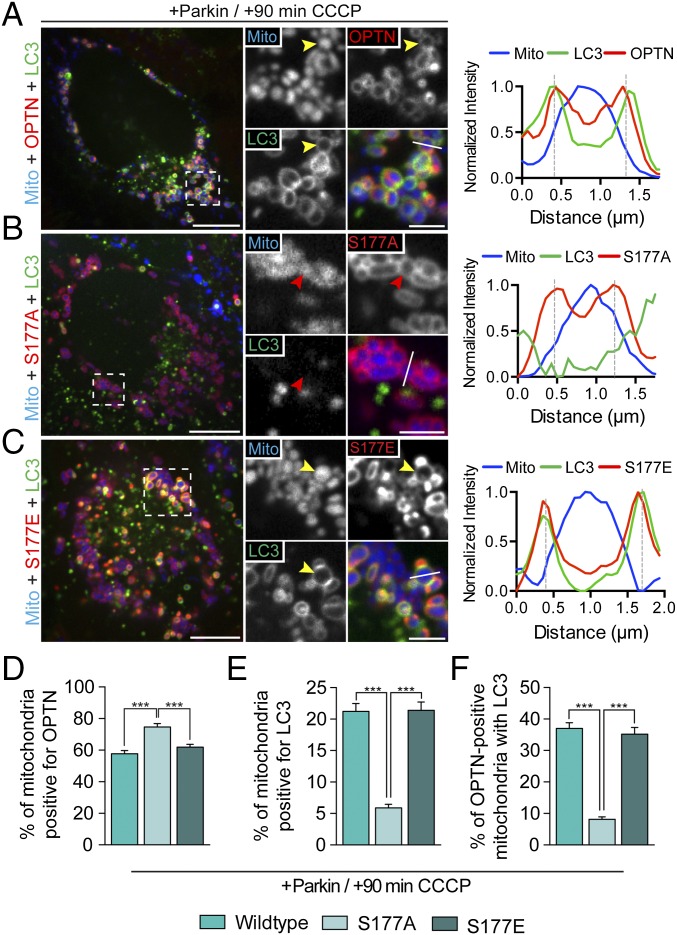Fig. 8.
OPTN S177 phosphorylation is required for efficient mitophagy. HeLa cells expressing untagged Parkin, Mito-DsRed2, and GFP-LC3, as well as WT-OPTN (A), OPTN-S177A (B), or OPTN-S177E (C) were treated with 20 μM CCCP for 90 min. (A) At 90 min post-CCCP, WT-OPTN and LC3 are enriched on the outer surface of mitochondria (yellow arrowheads). Line scan analysis through the indicated mitochondrion shows overlapping OPTN and LC3 local maxima. (B) Cells expressing OPTN-S177A show clear recruitment of phosphodeficient OPTN to fragmented mitochondria, but fail to recruit LC3 efficiently after CCCP treatment (red arrowheads). The corresponding line scan indicates S177A, but not LC3, localization to mitochondria. (C) Phosphomimetic OPTN-S177E, like WT, translocates with LC3 to the surface of mitochondria after CCCP treatment (yellow arrowheads). A line scan shows S177E/LC3 colocalization around mitochondria. (D–F) Phosphodeficient OPTN is robustly recruited to mitochondria after CCCP treatment compared with WT-OPTN or S177E, but blocks recruitment of LC3. [Scale bars: A–C (full size), 10 μm; A–C (zoom), 2.5 μm.] Data were collected from 25 to 41 cells from at least three independent experiments. Bars represent mean ± SEM. ***P < 0.001.

